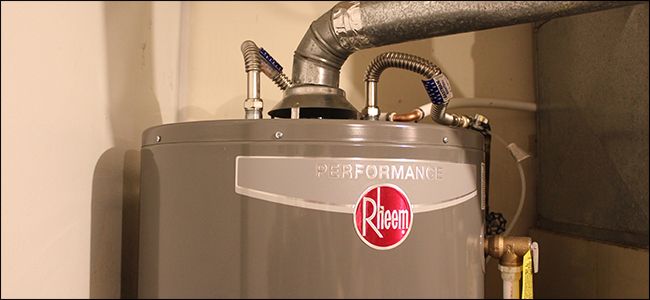How to Keep Your Home's Hot Water System in Good Condition
This PageWhat are your ideas concerning How to Maintain a Hot Water Heater in a Few Simple Steps?
:max_bytes(150000):strip_icc()/reasons-gas-water-heater-not-working-5212987-hero-fe6b82a59053421c88b7d13ea311d3c5.jpg)
Warm water is crucial for daily comfort, whether it's for a rejuvenating shower or cleaning meals. To guarantee your hot water system runs efficiently and lasts much longer, routine maintenance is vital. This short article gives useful pointers and understandings on how to preserve your home's warm water system to avoid interruptions and costly repair services.
Introduction
Preserving your home's hot water system might appear complicated, but with a couple of straightforward steps, you can guarantee it runs smoothly for many years to find. This overview covers everything from comprehending your hot water system to do it yourself upkeep suggestions and understanding when to call professional assistance.
Significance of Keeping Your Hot Water System
Regular maintenance not only prolongs the lifespan of your hot water system but also guarantees it operates successfully. Neglecting maintenance can result in reduced effectiveness, greater power costs, and also early failing of the system.
Indicators Your Warm Water System Requirements Maintenance
Understanding when your warm water system requires interest can stop significant concerns. Look out for signs such as inconsistent water temperature, strange noises from the heater, or corroded water.
Purging the Hot Water Heater
Purging your hot water heater removes debris accumulation, improving performance and extending its life.
Checking and Replacing Anode Rods
Anode rods avoid corrosion inside the tank. Evaluating and changing them when broken is critical.
Facility Concerns Needing Expert Help
Examples include major leakages, electric issues, or if your water heater is regularly underperforming.
Routine Professional Upkeep Conveniences
Expert maintenance can include thorough inspections, tune-ups, and making certain conformity with safety standards.
Evaluating and Readjusting Temperature Settings
Readjusting the temperature level setups makes sure optimal efficiency and security.
DIY Tips for Upkeep
You can do a number of maintenance tasks yourself to maintain your hot water system in top problem.
Checking for Leaks
Frequently inspect pipelines and connections for leakages, as these can result in water damage and higher bills.
Recognizing Your Hot Water System
Prior to diving into upkeep tasks, it's helpful to recognize the standard components of your warm water system. Usually, this includes the water heater itself, pipelines, anode rods, and temperature level controls.
Monthly Upkeep Tasks
Normal regular monthly checks can assist capture small concerns before they escalate.
Evaluating Pressure Relief Valves
Testing the stress relief valve guarantees it works correctly and avoids excessive stress buildup.
Insulating Pipelines
Protecting hot water pipes reduces warmth loss and can conserve power.
When to Call an Expert
While do it yourself maintenance is useful, some concerns require professional experience.
Conclusion
Routine maintenance of your home's hot water system is necessary for efficiency, long life, and expense financial savings. By adhering to these tips and knowing when to look for expert aid, you can make certain a reliable supply of hot water without unexpected disruptions.
How to Maintain an Instant Hot Water Heater
Before tinkering with your hot water heater, make sure that it’s not powered on. You also have to turn off the main circuit breaker and shut off the main gas line to prevent accidents. Also turn off the water valves connected to your unit to prevent water from flowing into and out of the appliance. 2. When you’re done, you have to detach the purge valves’ caps. These look like the letter “T†and are situated on either side of the water valves. Doing so will release any pressure that has accumulated inside the valves while at the same time avoid hot water from shooting out and burning your skin. 3. When the purge valves’ caps are removed, you have to connect your hosing lines to the valves. Your unit should have come with three hoses but if it didn’t, you can purchase these things from any hardware or home repair shops. You can also get them from retail stores that sell water heating systems. Read the user’s manual and follow it to complete this task properly. When the hosing lines are connected, open the purge port’s valves. 4. You should never use harsh chemical cleaners or solutions when cleaning your unit. Make use of white vinegar instead. It should be undiluted and you’ll probably use about 2 gallons. 5. Now flush your water heater. This task should probably take about 40 minutes. We can’t give you specific directions for this because the procedure is carried out depending on the type, model and brand of your heater. With that being said, refer to the user’s manual. 6. When you’re done draining the unit, you have to turn off the purge port valves again. Remove the hosing lines that you earlier installed on each of the water valves. Put the valve caps (purge port) back in their respective places and be very careful so as not to damage the rubber discs that are found inside these caps. 7. Now that everything’s back in place, check your user’s manual again to find out how to reactivate your water heating system. 8. Once it is working, turn one of your hot water faucets on just to let air pass through the heater’s water supply pipes. Leave the tap on until water flows smoothly out of it. https://www.orrplumbing.com/blog/2014/september/how-to-maintain-an-instant-hot-water-heater/

I was introduced to that article about Tips on Maintaining a Water Heater through an associate on another domain. Do you know somebody who is very much interested in the topic? Feel free to promote it. Thanks so much for taking the time to read it.
Call Today